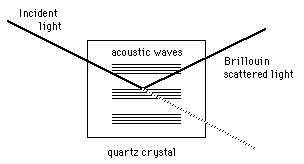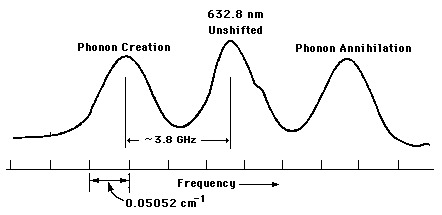Acousto-Optic Modulator
Light traveling through a quartz crystal can be diverted from its path by an acoustic wave. Light can be scattered off the areas of altered density caused by the acoustic wave in a process called Brillouin scattering. The analogy is made to Bragg scattering in that the sound waves produce effective planes for scattering the incident waves. The light reaching
the point directly along the incident light path will be modulated by the presence of the acoustic wave. If that path is part of the amplification path to produce laser action, then the acoustic wave will "Q-switch" the laser on and off.

An acoustooptic coupler accomplishes Q-switching by scattering the incoming light from acoustic waves in a crystal. The periodic scattering of the light reduces the "quality" of the cavity and prevents laser action. Only during brief intervals when there is no scattering is laser action possible, so pulses are produced at these times when there is no density change along the light path through the crystal.
Moller reports the frequencies applied to the crystal for the production of the acoustic standing waves to be a few Hertz to 50 kHz for the acoustooptical modulator and that the resultant laser pulses are on the order of 100-500 picoseconds.
|


